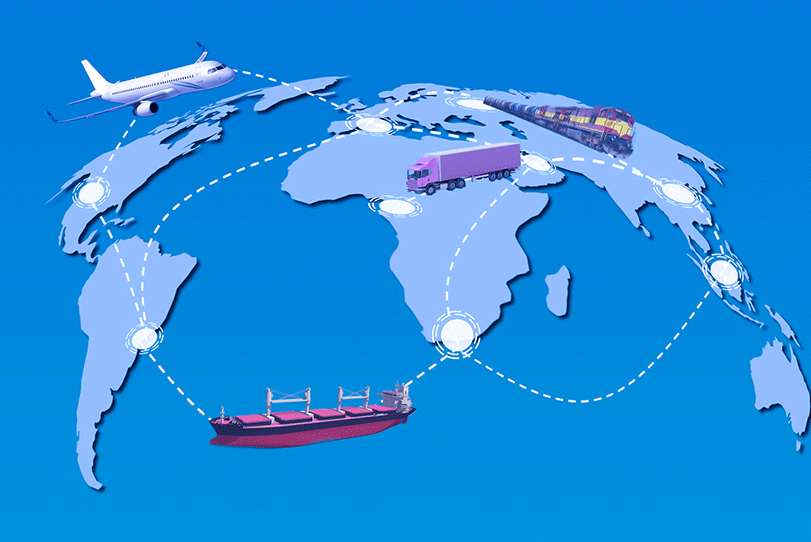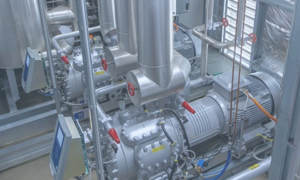Industry’s leading refrigeration experts talk about developing an integrated network in logistics and long-haul storage and transportation with 3PL and 4PL services.
India’s stand in global refrigeration market Today, refrigeration has become an integral aspect of our everyday life although most of the people don’t realise it. B it pharma industry, food and vegetables, milk and poultry; and now more than ever complete cold chain creation for COVID-19 Vaccination everywhere refrigeration plays a major role.
According to Gaurav Bali, Manager Technical Sales – Refrigeration & Retail, Carel, globally refrigeration market is growing. “For India, we foresee a good future as we have been witnessing government’s push in terms of subsidies, Atmanirbhar Bharat for promoting local industry (including refrigeration companies), Changing food consumption habit of people i.e. frozen foods, storage of vaccines. Emergence of data monitoring & IOT of critical goods is also gathering pace and would fuel use of better technology in Refrigeration ecosystem.
According to Aditya Vazirani, CEO – Robinsons Global Logistics Solutions, The COVID 19 pandemic has brought about a large-scale health and economic crisis. Just like other sectors, logistics and supply chain as an industry has also suffered severe setbacks, mostly due to the closing of borders, negligible international trade, slowing down or shutting of manufacturing and other industrial sectors.
Throughout the last few years until 2020, the Indian refrigeration market has presented steady growth. At the present moment, the Covid-19 pandemic has put a question mark on markets analysis and estimates. But we try to look past that and analyse the fundamentals. According to Renato Conti Gava, Sales Manager, Nidec Global Appliance, they see a great potential in India’s refrigeration market. In recent years, India has been heavily investing in infrastructure, such as transportation, storage and logistics, which paves the way for economic growth. Combined with investments in the cold chain infrastructure, to improve the quality and reduce waste from farm to fork, it tends to create a favourable environment for the proliferation of more food retail, food service and other refrigeration dependent sectors. “So, when we look to the global refrigeration market, we see India as an important share of it, due to its large population and growth potential.”
Technologies enhancing refrigeration efficiency
The increasing demand for refrigeration further calls for a sustainable growth. We need to shift toward greener and energy efficient system i.e., use of natural refrigerants (CO2, Propane, Ammonia) and more efficient refrigeration systems. Here, Gaurav talks about Carel’s focus on energy efficiency, they have a range of products such as electronic expansion valves, solution for BLDC (variable speed) compressor driven systems, Adiabatic humidifiers etc. These technologies enable our customers build sustainability and energy efficiency in their product/System design.
Whereas, Renato mentions it as an important question for them. At Nidec Global Appliance energy efficiency is one of the major drivers of their Research and Development efforts. So, their innovation projects always have efficiency improvement as one of the larger goals to be achieved, in all products of our portfolio, which include cooling solutions, motors for washing machines, dryers and dishwashers, as well as components for heating, ventilation and air- conditioning systems (HVAC).
But, when the goal is maximum energy efficiency, to respond to stricter energy consumption regulations or reduce operating costs, “we believe the way forward is the variable speed compressors technology, which achieves even higher energy efficiency due to its inverter technology and when combined with the use of natural refrigerants”, Renato adds.
Variable speed compressors can provide energy savings of up to 40 percent, depending on the application, in comparison with fixed speed ones. And it has other advantages, such as lower noise and vibration, improved startability even under voltage fluctuation and better food preservation.
Regenerating market’s confidence in cold chain refrigeration
Emergence of COVID-19 Vaccine and requirement for its storage and transportation has increased the business of Medical Refrigerators, Cold Storages and Refer trucks and we feel this would help the Refrigeration sector to recover. “The pandemic has obstructed most of the business prospects, including the refrigeration. Today, as businesses are taking all possible efforts to regain the market confidence, we feel businesses are slowing being restored; although it will take time to be operational to its full potential”, feels Gaurav.
These have been trying times, both on the national and global level and governments and economies are struggling to build a stronger revival strategy, says Aditya. The market is currently depending on cold storage facilities to effectively store surplus build-up of food, while also store and deliver vital medication and pharmaceutical products in an effective fashion. “At critical stages, implementing technology to create better visibility across the supply chain would drive market confidence showcasing and determining that the yield to sale percentage is higher than 60 percent, adds Aditya.
Talking about the same, Renato feel that governments need to address various economic, social and sanitary demands with limited resources. When we talk about pharma and F&B sector, both require installed base expansion, especially in less developed regions, which is very dependent on big investments in refrigeration infrastructure. To make these investments requires confidence in the future and in the economic growth potential to assume the investment risk.
“So, to regenerate confidence, and support these sectors, interim measures that can be used are creating incentive programs to help the industry develop best in class technology which would reduce the initial investments and operating costs”, Renato adds.
Role of 3PL and 4PL in Indian refrigeration
The concept of 3 PL is towards logistics service providers i.e., cold stores, reefer trucks etc; and 4PL is whole supply chain management. “As far as Refrigeration industry is concerned, I think, focus would I think, focus would be more on 4PL logistics; because temperature of the product i.e., Vaccines, F&B, dairy products and other perishable goods should be mapped in the entire supply chain and not just the logistics part. Here, 4PL is vital to do mapping and ensure that the commodity is kept at a desired cooling condition”, explains Gaurav.
Aditya here highlights that the Indian refrigeration and cold supply chain essentially consist of cold storage/ warehouses (60 percent) and cold/ temperature-controlled transportation (40 percent). So far, lack of trained resources and adequate infrastructure has been a major challenge in the growth and development of the sector. “However, with the rise of 3PL and 4PL service providers, coupled with government-led initiatives, and the quicker adoption of technology and expertise in Inventory management and deliveries would create a robust requirement and gradual shift away from the unorganised to the better organised service providers”, he adds.
Renato explains that refrigeration industry is fundamental for logistics operators because cold transportation makes the bridges between the cold chain links. Agriculture is a strong powerhouse for India and, to expand it, improving the cold chain will be key, to increase its economic efficiency, reducing costs, expanding its output and improving the quality of goods. Developing this cold chain infrastructure will be a key step to leverage India to the next growth level.
From the point of view of our refrigeration compressors and condensing units’ distribution throughout India, availability of product is key for a growing industry. “So, having an integrated supply chain is essential to the consistency of deliveries, allowing our customers to have their full portfolio in the market, avoiding any unavailability of products that may cause sales losses”, Renato adds.
In this sense, 3PL and 4PL companies are strategic partners for a provider of refrigeration solutions uch as we are. That is why Nidec Global Appliance is working on a partnership with a 3PL operator in India to support customers that may face challenges on forecasting their demand. As we see the customer behaviour changing constantly, the chain must be prepared for last minute changes.
Future of cold storage and refrigeration in India
India is a cost competitive market and the new advance technologies are dearer due to lower volumes; we must find a balance to optimise the cost with the available and offered be optimised by the benefits they offer. Also, with the push of domestic manufacturing we see huge potential for exporting refrigeration product to other countries but we need to increase the product standards by incorporating high efficiency and better quality to compete with other countries. Government is pushing for setting up cold storages and logistics capacity for many years now, but with current situation we feel companies would invest to set up new big cold storages and modular cold rooms for smaller towns for vaccine storage. “The infrastructure created for vaccine distribution would later help us in storing other commodities and reduce the wastage. Also, the technologies used i.e. IOT, remote tracking and temperature monitoring would increase thereby, modernising the whole set up thus reducing the waste, eliminating inefficiency in the process and bringing sustainable business model for cold storage companies”, feels Gaurav.
Aditya, on the other hand says, “40 percent of India’s agricultural produce is wasted due to the ack of an efficient cold chain network. It was thus the need of the hour to focus on building one and I am glad the government has taken steps in the direction. By identifying logistics as part of the infrastructure segment, there is hope in creating a more organised and integrated ecosystem for storage and movement of goods, including those for agricultural products.”
The initiative for a dedicated railway and air freight corridor transporting agriculture produce, the setting up of cold storages at key ports and airport terminals and the development of logistic hubs etc., are all significant steps in driving the growth of an organised and efficient cold supply chain network for agriculture and food products.
Noting the same, Renato says “When you develop the initial links for cold chain and logistics, you leverage financial benefit to farmers, and create basic conditions for the other links to evolve; such as food retail and food service businesses. A developed cold chain reduces food waste and offers more convenience and life quality to people. Each improvement made in the cold chain infrastructure generates results that trigger the opportunity for more investments, in a virtuous circle.
Final note
The cold supply chain and temperature-controlled warehousing that is responsible for handling pharmaceuticals, perishable foods, agricultural produce, meat, fish and dairy products etc., has seen a surge. From transport bottlenecks resulting in longer storage duration in the warehouses to increased demand, have all led to the active and thriving cold supply chain. Going forward, with mild hiccups, the industry is considering this a blooming sector and keeping up with the estimated growth numbers.
Cookie Consent
We use cookies to personalize your experience. By continuing to visit this website you agree to our Terms & Conditions, Privacy Policy and Cookie Policy.















